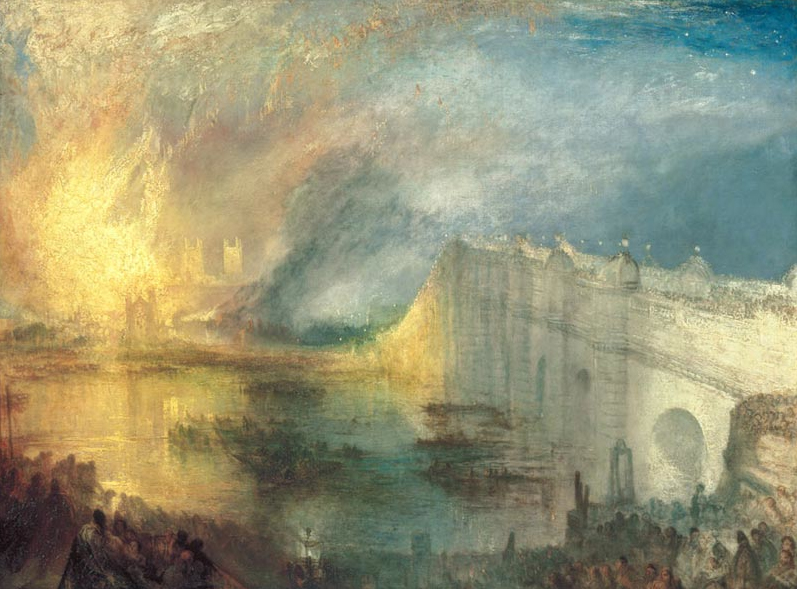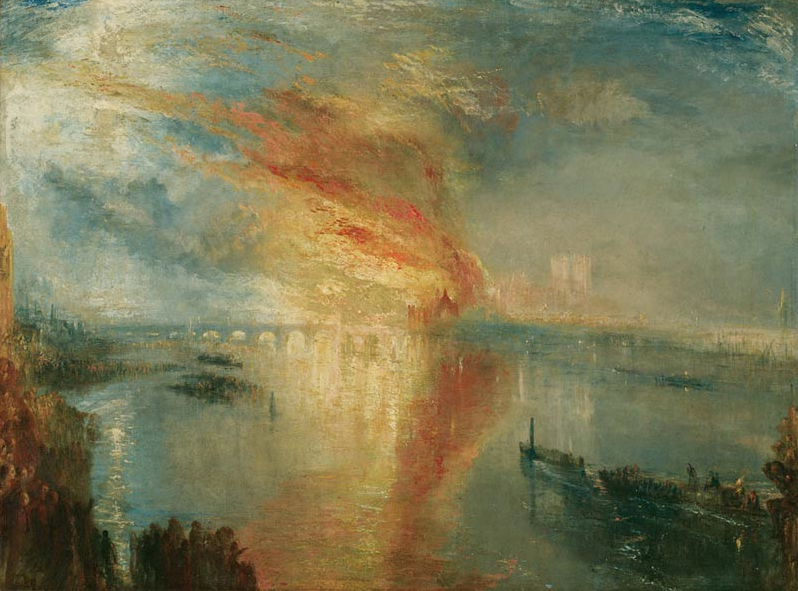J.M.W. Turner

The Burning of the Houses of Lords and Commons, 16th October, 1834, 1835, Philadelphia Museum of Art, The John Howard McFadden Collection, 1928
1 of 9

The Junction of the Thames and the Medway, 1807, oil on canvas, Widener Collection, 1942.9.87
2 of 9




Venice: The Dogana and San Giorgio Maggiore, 1834, oil on canvas, Widener Collection, 1942.9.85
6 of 9



The Burning of the Houses of Lords and Commons, October 16, 1834, 1835, The Cleveland Museum of Art, Bequest of John L. Severance
9 of 9